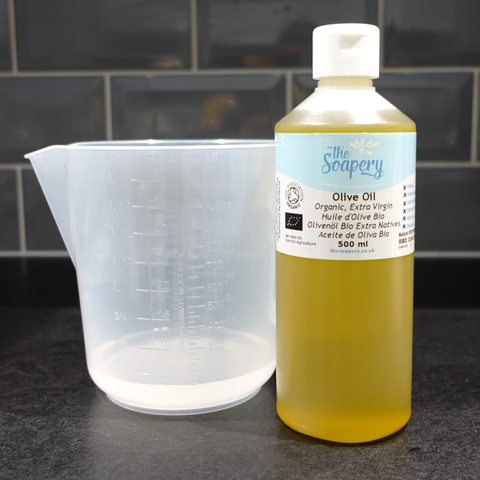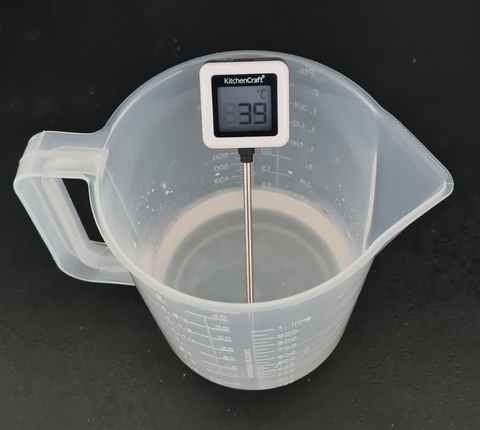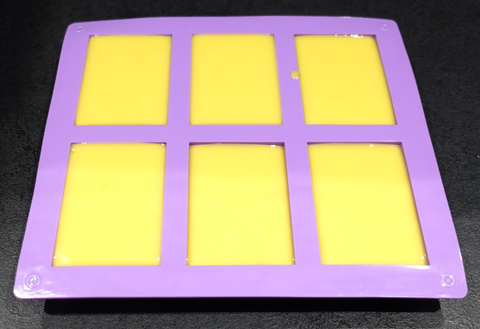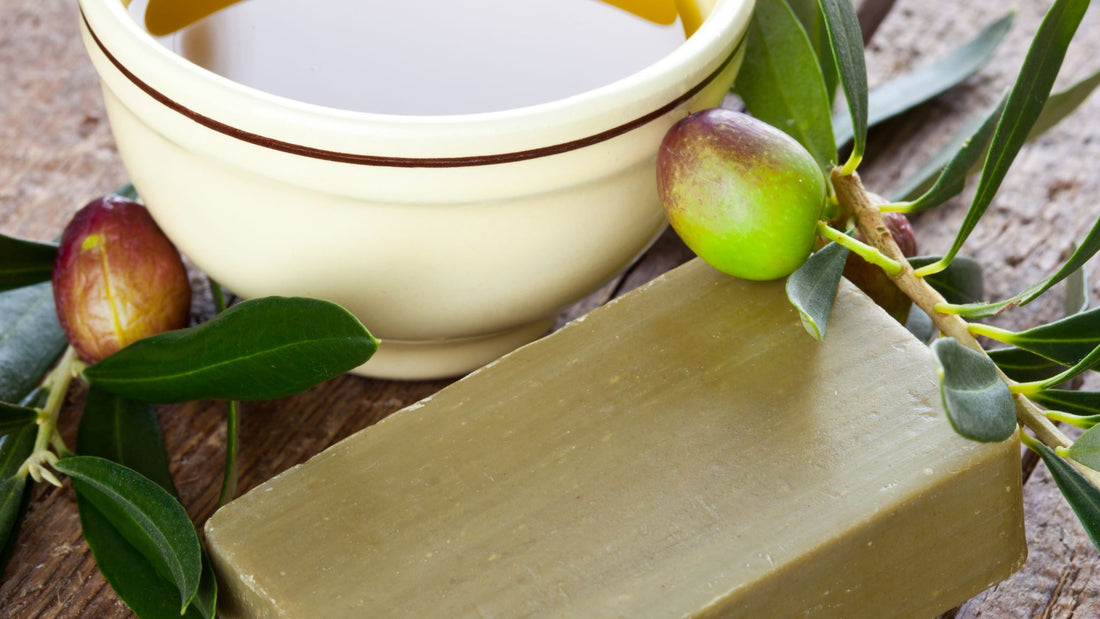Who doesn’t love olive oil! Tasty, good for you and used every day in the kitchen. But did you know you can make a beautiful, gentle olive oil soap bar that is perfect for all skin types, even sensitive skin?
If you’re wondering how to make olive oil soap then wonder no more - we’ve got a fantastic olive oil soap recipe to share with you…
Ingredients
This olive oil soap recipe will make around 6 x 100g bars.
- 450g | 500ml organic extra virgin olive oil
- 103g water
- 58g sodium hydroxide
- Up to 13.5g essential oils of your choice (optional)
Equipment
- Gloves
- Goggles
- Weighing scales
- Hand blender
- A 6 cell silicone rectangle bar mould or line a small, cardboard box with greaseproof paper (Explore our range of silicone soap moulds here)
- 2 x 1 litre plastic or stainless steel jugs
- Saucepan
- Silicone or stainless steel spatula
- Digital or jam thermometer
Safety Note: When working with sodium hydroxide you must wear gloves and goggles at all times. It is a caustic product and will burn. If it gets on your skin, rinse well with plenty of plain water. If it is splashed in the eyes, wash with water and seek urgent medical attention. Keep away from pets and children at all times.
Method
1. Weigh your ingredients

- Weigh out the olive oil into your saucepan
- Weigh your cold water into one of your jugs and place to one side.
- Pop your safety gear on - goggles and gloves
- Weigh the sodium hydroxide into one of your jugs.
- Pour the sodium hydroxide into your water jug, not the other way around. Take care to do this in a ventilated area and stir for around 10 to 15 seconds until completely dissolved with your spatula. Place safely to one side. It will be too hot to use at the moment.
- Optional step - weigh the essential oils if using.
2. Check your temperatures

- Test the temperature of your sodium hydroxide solution with your thermometer. Let it cooled down to around 37 to 49°C
- Warm your olive oil on the hob. Bring this up to around 37 to 49°C as well.
- When you are happy with your temperatures pour your essential oils and then your sodium hydroxide solution into your olive oil
3. Blend until trace

- Stir gently with your hand blender and then blend until it reaches a light to medium trace. This means you have a mixture that has thickened up a little and when you drizzle a little of it across the top of the jug of mixture it sits on top for a moment. You are looking for a pourable mixture but not a thick blancmange like texture.
- Olive oil is very slow to reach trace so you may need to mix for 5 minutes or so. The bigger your batch and the lower your temperatures the longer it will take. If you go too far and find it is too thick to pour, do not worry, you can spoon it into your mould and it will still be the same lovely bar of soap.
4. Pour into your moulds

- Pour into your mould. Top tip - if it’s a cold day pop the mould in a cardboard box and wrap in a towel to keep it warm to aid the saponification process.
- Leave for a week before unmoulding. Olive oil soap takes longer to firm up than most.

5. Unmould and cure your soap
- Place your bars back in the box with airflow between them or on a plastic rack somewhere dry and out of the sun to cure the soap. Your cold process soap is safe to use within 4 to 6 weeks, however olive oil soap takes much longer to harden up and you will find it is still quite soft and does not last long at this stage. Ideally leave for 3 or 4 months plus.
This is made with a 5% superfat and 23% water.
Now you know how to make olive oil soap! Once you’ve tried our olive oil soap recipe we’d love to see your pictures! Share them with us on Facebook or Instagram and let us know what your favourite essential oils are to add.



